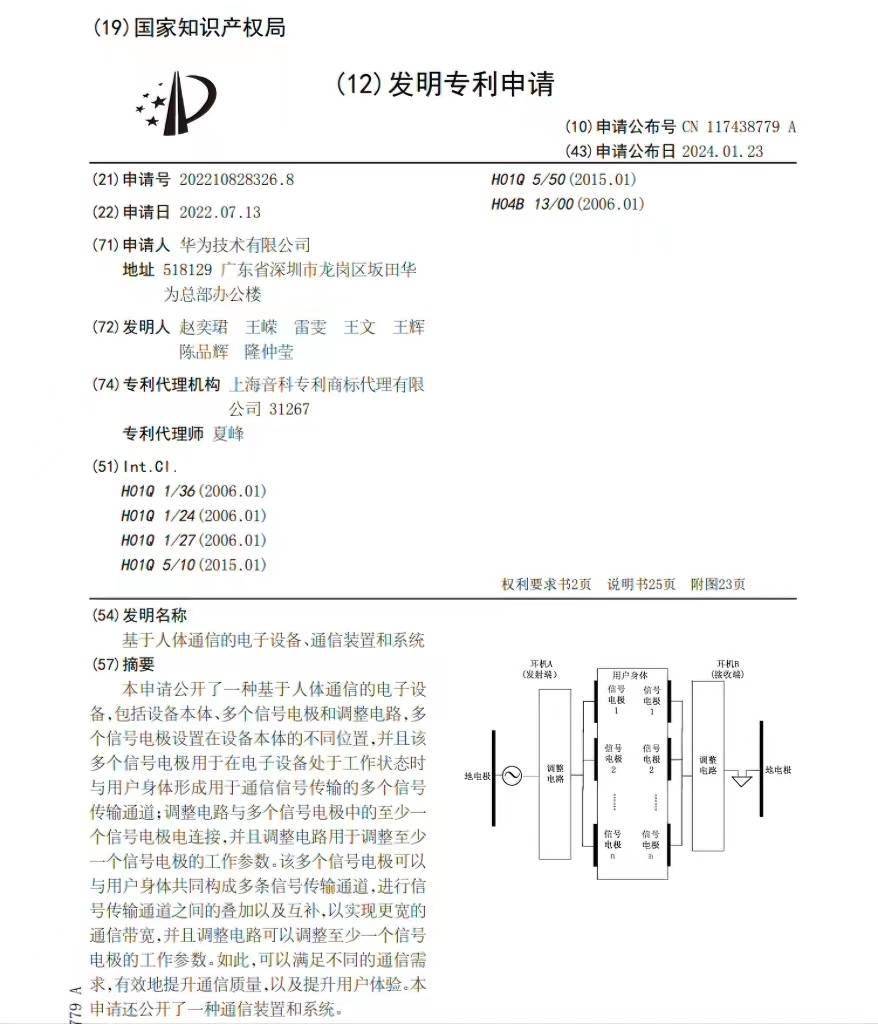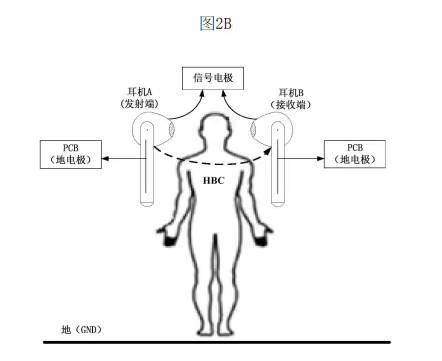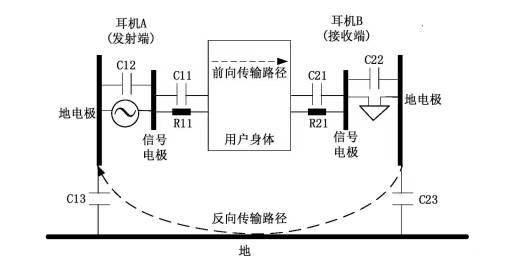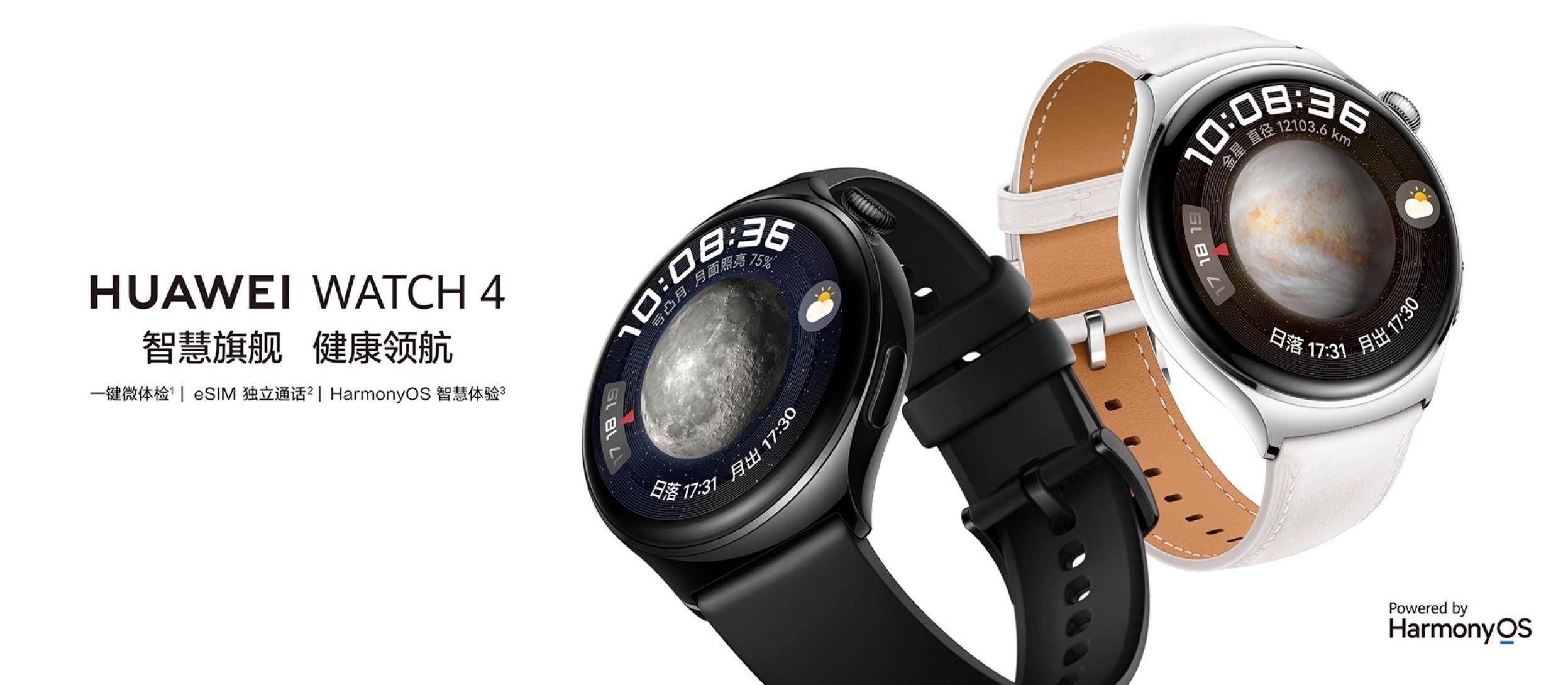Huawei’s New Patent Introduces Innovative Body Communication Technology
According to IT Home, Huawei has recently applied for a new patent related to a novel electronic device. This patent involves a technology based on Human Body Communication (HBC) principles, which utilize the human body as a medium for information transmission, enabling short-range communication. This approach offers high security, immunity to environmental interference, and low power consumption.

(Image source: National Intellectual Property Administration)
In simple terms, this technology uses the human body as a “communication line,” allowing different electronic devices such as earbuds, smartwatches, and smartphones to transmit data through the human body. It’s like when we touch two devices with our fingers and they transfer information through our bodies.

(Image source: National Intellectual Property Administration)
The patent also mentions various usage scenarios. For instance, two computers can be quickly connected by human touch for fast data transfer. When measuring weight, a body fat scale and a smartwatch can establish a connection through the user’s body to transfer body metrics. Additionally, in special environments such as underwater swimming, devices like earbuds and smartwatches can utilize low-frequency human body communication technology for data transmission. This technology offers a more direct and convenient way for interconnection and communication between electronic devices.

(Image source: Huawei)
Xiao Lei believes that this new technology has great prospects and several technological advantages.
Firstly, by using the human body as a transmission medium, the risk of data interception can be reduced because the communication range is limited to the area of body contact. Due to this limited communication range, this technology can better safeguard user privacy.
Secondly, it enables direct physical connections between devices without the need for complex pairing processes. Compared to traditional wireless communication technologies like Bluetooth or Wi-Fi, human body communication may be more energy-efficient.

(Image source: National Intellectual Property Administration)
Furthermore, its applications are extensive, such as in wearable devices like smartwatches and health monitoring devices for data synchronization and transmission between them. It also facilitates fast data exchange between smartphones, computers, tablets, and other smart ecosystem devices.

(Image source: Huawei)
Even in the fields of healthcare and payment security, this technology holds great promise. Patients can transmit crucial health data to medical monitoring devices through body communication. For instance, in everyday payment scenarios, transactions can be securely and conveniently accomplished at payment terminals through simple touch, potentially making it more secure and convenient than current fingerprint or facial recognition methods.
Today, with the rapid development of AI and various smart devices, the integration of this body communication-based technology with the Internet of Things (IoT) and AI can significantly enhance the perception capabilities and automation levels of smart environments.
For instance, within the IoT, various devices can connect and exchange data through human body communication, allowing users to interact with smart home devices through simple touch or proximity actions. Alternatively, by integrating with AI technology, the system can learn user preferences and behavioral patterns based on data collected through body communication, thus providing more personalized services. For example, health data collected through body communication by smart wearable devices can be used to adjust settings in a home health monitoring system.

(Image source: Huawei)
In summary, this technology opens up new possibilities for human-machine interaction. As the technology matures and its applications become more widespread, it could bring greater convenience and security to our daily lives.